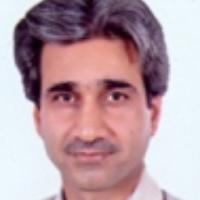Using of stochastic simulation for determine of appropriate breeding plan in Sistani breed cow
Author(s):
Abstract:
The aim of this study was to design the base breeding plan in Sistani cattle by using of stochastic simulation. For this purpose, three population size (500, 1000, 2000 heads), three levels of herd number (5, 10, 20), two levels of selection intensity (high and low) and two levels of mating method (random and Minimum co-ancestry) were combined together and in total 36 scenarios were compared for 30 years. Results showed that the effect of all factors on the annual genetic gain for total merit, the annual genetic gain of birth weight (except in mating method and selection intensity) and yearling weight, the annual inbreeding rate (except in herd number), generation interval (except in mating method and selection intensity) and selection accuracy of sire and dames was significant. The annual genetic gain in high selection intensity, population size of 2000 and less number of herd (5 herds) was 8.5, 93.2 and 38 percent higher than low selection intensity, population size of 500 and more number of herd (20 herds). Despite having less total genetic gain (11 percent) in Minimum co-ancestry mating, the annual inbreeding rate in this mating method was 18 percent lower than random mating. The results of this study showed that less number of herd, large population size and high selection intensity considered in breeding plans of Sistani cattle and minimum co-ancestry mating used for control of population inbreeding.
Keywords:
Language:
Persian
Published:
Journal of Animal Productions, Volume:17 Issue: 2, 2015
Pages:
161 to 170
https://www.magiran.com/p1442578
سامانه نویسندگان
مقالات دیگری از این نویسنده (گان)
-
Analysis of the Genetic and Phylogenetic Structure of the Mitochondrial Genome of Wild and Domestic Goat Species
Batol Asghari Esfedan*, Alireza Khan Ahmadi, Gholam Reza Dashab, Elias Lotfi Farokhad
Research On Animal Production, -
Investigating the effect of sweet paste containing AVP-4 اNano-supplement on queen laying, population size and biochemical characteristics of the carcass in honey bee (Apis mellifera) colonies.
Masoud rezvan, GholamReza Dashab, Mostafa Yousef ellahi, Naser Tajabadi, kamal Shojaian, Mohammad Behjatian
Animal Sciences Journal,


